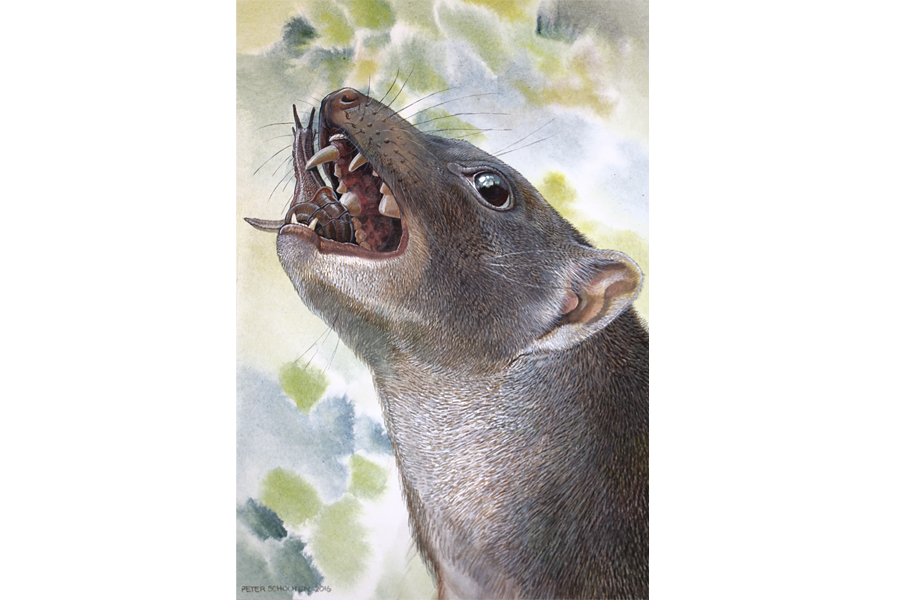This ancient Aussie marsupial dined on snails, say scientists
Loading...
Scientists have an addition for the list of weird extinct animals found in Australia: a snail-munching marsupial.
"Malleodectes mirabilis was a bizarre mammal, as strange in its own way as a koala or kangaroo," University of New South Wales professor Mike Archer, the lead author of a study published Friday in the journal Scientific Reports, says in a press release.
New fossil evidence suggests the animal was a cousin of contemporary animals such as the Tasmanian devil, but roamed the earth around 15 million years ago. Tracings of the animal were found in the Riversleigh World Heritage Fossil Site near Queensland, where scientists have found puzzling remains before.
The main traces of the animal came in dental form. Isolated samples of teeth and dentitions were found over several years – the part of Riversleigh where they were found has been excavated by Professor Archer and other researchers for nearly 40 years.
But now, "details of the canine, premolar and molar teeth of this specimen have enabled its relationships to other Australian marsupials to be determined with reasonable confidence," according to Dr. Archer. The team has declared the escargot-loving creature its own family, Malleodectes mirabilis: The Marvelous Hammer Biter, as indeed they would need to be, in order to chomp through snail shells.
The big clue that led to scientists declaring the animal its own family occurred when a portion of a skull from a young member of the marsupial group was found in the cave deposit.
The skull had to be extracted from a heavy limestone casing using acid. Once freed, its teeth were analyzed by scientists who determined the animal was likely a completely different family than cousin animals living around the time period. Scientists were able to use adult teeth that were just starting to emerge for the young animal before its demise.
"The juvenile malleodectid could have been clinging to the back of its mother while she was hunting for snails in the rocks around the cave's entrance, and may have fallen in and then been unable to climb back out," Professor Suzanne Hand, research group member, said in a statement.
For the Riversleigh area, that tragic fate was likely a common occurrence.
"Many other animals that lived in this lush forest met a similar fate with their skeletons accumulating one on top of another for perhaps thousands of years, until the cave became filled with paleontological treasures," Dr. Hand added.
Scientists discovered the cave in the 1990s, and it has provided a range of unusual fossils, including a marsupial capable of searching for grub like a woodpecker and a tusked kangaroo-type animal. Most memorable, perhaps, is the Dromornis, one of the largest birds ever discovered. Not one you'd want to run into, though, as its nickname illustrates: "The Demon Duck of Doom."
Even in such unusual company, the malleodectid stands out to researchers – for its appetite.
"Uniquely among mammals, it appears to have had an insatiable appetite for escargot – snails in the whole shell. Its most striking feature was a huge, extremely powerful, hammer-like premolar that would have been able to crack and then crush the strongest snail shells in the forest," Archer explained.
Scientists believe the young marsupial was likely one of the last of the family, as a severe climate change event reshaped Australia from rainforests to grasslands and caused heavy stress to existing animals.
"This climate change-driven transformation in Australia's wildlife over the last 15 million years is a timely reminder of the probable outcome of the next cycle of climate change, one we appear to have triggered ourselves," says Archer.






